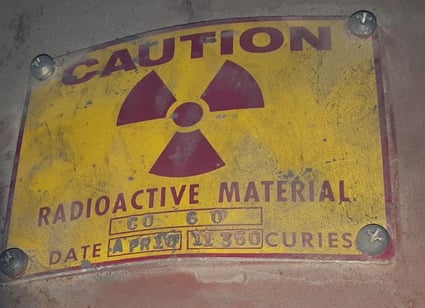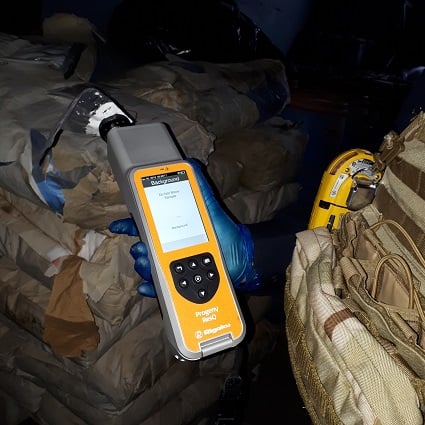What is CBRNE?

 February 25, 2022 - "CBRNE" is an acronym used to reference categories of weapons that are deployed to offset the combat power of an adversary, introduce terror, and / or assassinate.
February 25, 2022 - "CBRNE" is an acronym used to reference categories of weapons that are deployed to offset the combat power of an adversary, introduce terror, and / or assassinate.
Chemical - nerve, mustard, blister agents
Biological - virus, bacteria, toxin agents
Radiological - gamma radiation
Nuclear - ominous threat that involves a blast wave, followed by a radiological threat left behind
Explosives - high-yield explosives designed for wide area destruction
The employment of a CBRNE device generates high anxiety and terror.
Who Responds to CBRNE Incidences?
If a device is discovered prior to detonation, a technical team comprised of explosive ordnance disposal (EOD) and consequence management will respond to disable, disarm, and conduct remediation or package the device respond. If the device detonates, the task force includes hazardous material survey and remediation.
Chemical and biological attacks are unique in that only an instrument or casualty can verify an attack. Without one or the other, a failed attack will go unnoticed. This “blind spot,” or false negative, can mislead decision makers into believing a CBRNE response capability is not justifiable.
CBRNE Equipment and Expertise
A CBRNE technical force is an expensive capability to train, organize and equip. Each of the 5 distinct domains have unique instruments designed to alert (to warn), alert (to treat), detect, presumptive ID, and contain. Additionally, personal protective equipment (PPE) is similar for a chemical and biological threat, but different for a radiological, nuclear, or explosive. Standoff and remote sensors platformed on drones (ground and air) provide distance between the technician and threat.
Expertise to operate in the CBRNE enterprise is either tactical or scientific. Tactical technicians understand the threat and how to employ instrumentation to detect, presumptive ID, decontaminate, remediate, disable, and disarm devices. The scientific experts are experts in a single domain providing threat analysis and design input on surveys and remediation techniques. They serve as reach-back expertise. Tactical technicians normally receive training and certification through military or fire fighter school and experience. The scientific are university credentialed in a hard science.
The Role of Handheld Raman Technology in CBRNE Response
 Raman spectroscopy has the ability to provide analysis of chemicals used in several CBRNE applications. Chemical warfare agents (CWAs), nerve agents, toxic industrial chemicals (TICs), and explosives are Raman-active materials, and thus Raman instrumentation has the ability to easily provide identification of their chemical fingerprints. Handheld Rigaku Raman tools provide even easier access to fast, presumptive field identification, without the need for a field laboratory. Operators are able to scan through packaging and receive an identification result in less than 1 minute for fast toxic chemical surveying. With the ability to set a measurement delay timer, users have the ability to scan suspect explosive materials safely.
Raman spectroscopy has the ability to provide analysis of chemicals used in several CBRNE applications. Chemical warfare agents (CWAs), nerve agents, toxic industrial chemicals (TICs), and explosives are Raman-active materials, and thus Raman instrumentation has the ability to easily provide identification of their chemical fingerprints. Handheld Rigaku Raman tools provide even easier access to fast, presumptive field identification, without the need for a field laboratory. Operators are able to scan through packaging and receive an identification result in less than 1 minute for fast toxic chemical surveying. With the ability to set a measurement delay timer, users have the ability to scan suspect explosive materials safely.
Because the Rigaku portfolio of handheld Raman analyzers utilize 1064 nm laser excitation, users have better ability to identify more real-world threats that are lower-grade and contain impurities from storage containers, degradation, precursors or intentionally added pigments or dyes to try to conceal. In addition, unique features such as 4C Technology monitors individual results to warn the user of a possible dangerous recipes. The optional QuickDetect Mode provides a method for capturing non-visible amounts of a substance.


